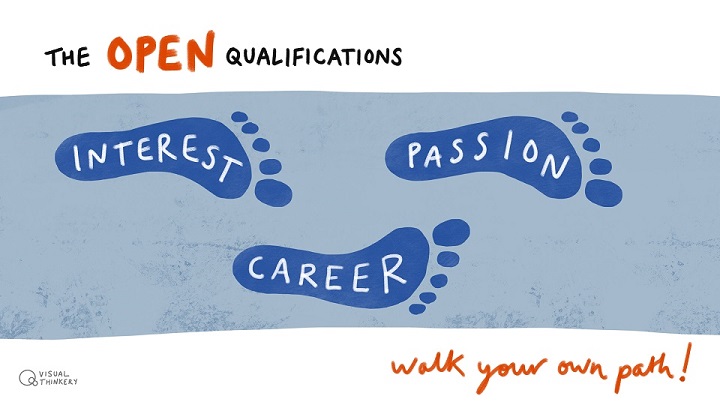 Dr Simon Scott is Associate Professor in the School of Liberal Arts, at the University of Birmingham. He is the school’s lead on interdisciplinarity and has convened modules on multidisciplinarity, interdisciplinarity, and transdisciplinarity. He is currently editing a book on Interdisciplinary Learning and Teaching: Pedagogies and Practice. His research is in two areas: on the study of interdisciplinarity, and interdisciplinary research on shame. Dr Scott was recently a Guest Lecturer at an Open University online seminar, ‘Facilitating reflection on interdisciplinary and multidisciplinary study’, and he discusses that seminar here.
Dr Simon Scott is Associate Professor in the School of Liberal Arts, at the University of Birmingham. He is the school’s lead on interdisciplinarity and has convened modules on multidisciplinarity, interdisciplinarity, and transdisciplinarity. He is currently editing a book on Interdisciplinary Learning and Teaching: Pedagogies and Practice. His research is in two areas: on the study of interdisciplinarity, and interdisciplinary research on shame. Dr Scott was recently a Guest Lecturer at an Open University online seminar, ‘Facilitating reflection on interdisciplinary and multidisciplinary study’, and he discusses that seminar here.
I really enjoyed the challenge of preparing this talk for students of the Open Programme. And it is a challenge to cover a lot of ground (and meaningfully) in a short time. I started, as we always should, with definitions: multi-, inter-, and transdisciplinarity. Someone rightly asked, in the Q&A at the end, about disciplinarity, and this often gets overlooked. A discipline is a collection of different communities and standardised practices of teaching and research, but there are still vast differences within them. This matters a lot: although disciplines are the building blocks of interdisciplinarity, they are ‘porous’ and not fixed entities.
That said, I emphasised in my talk that we should distinguish between ‘disciplines’ and ‘disciplinary approaches’. Disciplines are umbrella terms containing a multitude of different disciplinary approaches (which might include a thinker, an argument set out in an article, a theory, a concept etc.). This stops us from overpromising that we will “apply anthropology” when what we really intend to do is apply the work of a particular anthropologist. Specificity matters. But even when working in disciplines that are interdisciplinary (e.g. gender studies), we should ask: what discipline is dominant in this particular approach? For example, it might be an article that draws heavily on sociology.
In the second section of my talk, I began by setting out the three higher-order skills that interdisciplinarians practice: critical reflection, comparative thinking, and creativity. I spoke about each in turn, but what I didn’t have time to go into is how important it is to think of these three in relation to each other. Critical reflection gives us the grounding: everything stems from this. The interdisciplinarian not only studies works in each of the disciplines they’re using, but reflects on the disciplines themselves and how the authors use their disciplines to make claims. Comparative thinking builds on this: as interdisciplinarians, we are looking for ways to put disciplinary approaches in relation to each other, like chemists looking to generate reactions (and the occasional explosion). Which brings us to creativity, about which I could have given an entire talk. Creativity is what is most challenging, exciting, and difficult in interdisciplinary practice. What we integrate, in interdisciplinarity, are claims (or “insights”) from different disciplinary approaches. We are bringing a constellation of unique variables together that weren’t intended to be brought together, and we don’t know what will happen.
Although I didn’t remark on this in my talk, I hope that my talk conveyed two key messages: first, that interdisciplinarity is a rigorous practice; secondly, that we should think of ourselves as interdisciplinarians. Interdisciplinarity is not a discipline, and the interdisciplinarian doesn’t have a home in a discipline (even if you’re working in your area of expertise). But the interdisciplinarian is a nomad thinker and has an identity. This should shape our attitude when we practise interdisciplinarity.
I appreciated people giving up their time for the talk, and I hope everyone found it useful. If you’re interested in multidisciplinarity, I hope I’ve persuaded you to consider progressing to interdisciplinarity (although sometimes a multidisciplinary approach is all we need). If you’re interested in transdisciplinarity because you work in non-academia, then what I say about interdisciplinarity in my talk will still be useful.
I also hope what came across in my talk is the value of interdisciplinarity. Before the talk, we ran a couple of polls to find out why people were attending the event. There was a mix of personal and professional interest, and this was reflected in the questions. We are increasingly faced with problems, questions, and issues that cannot be contained within a single discipline. Universities are creating more and more centres of interdisciplinary research to respond to these. These often include disciplinary experts. But we need interdisciplinarians more than ever, not only for their ability to communicate effectively across disciplines, their openminded attitude towards all perspectives, their mental agility gained from thinking in different perspectives, but also their openness to the unknown.
A recording of the talk can be found here entitled Facilitating reflection on interdisciplinary and multidisciplinary study.
